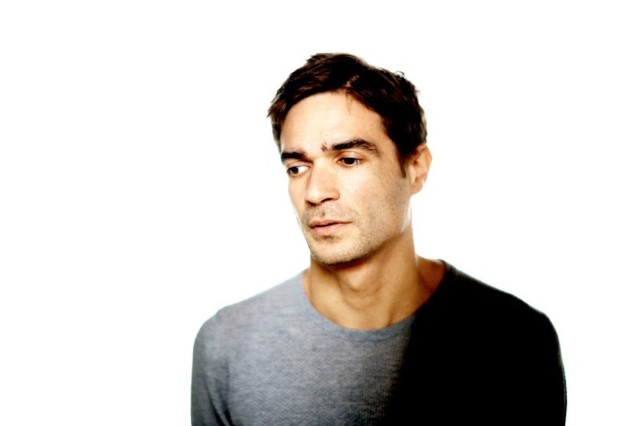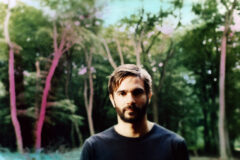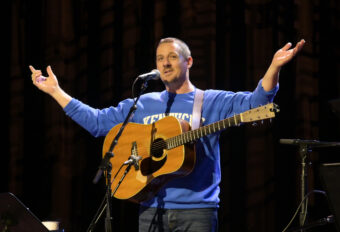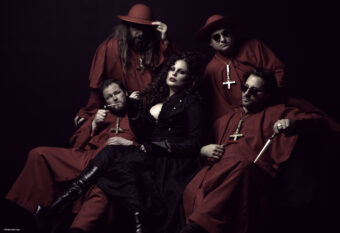Shortly after the release of his breakout fourth album Immunity, Jon Hopkins started tripping. The celebrated British electronic producer had long been versed in various consciousness-expanding forms of meditation, practices he intensified after the Immunity tour and promotional cycle left him feeling burnt out and unhealthy. But he hadn’t touched hallucinogens apart from a few mild experiences in his 20s. Then, at age 35, he felt what he described as a “particular call” to try DMT—a 10-minute trip that is regularly referred to as the most powerful psychedelic experience on the planet.
It changed everything. According to Hopkins, his fifth album Singularity is directly inspired by this trip and later ones: an attempt to recreate the psychedelic journey from chaos to clarity, fragmentation to wholeness. He’s still working within the same world as Immunity, though its borders have expanded considerably. Some passages from Singularity are filled with familiar whirring polyrhythms; others are contemplative and entirely beatless, having more in common with minimalist composers like Arvo Pärt than anything you might hear at a warehouse rave.
What strikes you most about the music is the overwhelming vividness and definition of every kick drum and shimmering synth line. This is where Singularity‘s true psychedelic character emerges. Each moment is a tableau unto itself, with countless new colors and shapes competing for your attention. Tune your attention into one single element, and a new world emerges.
Spin spoke with Hopkins about the process behind Singularity, the drug experiences that inspired it, and what it means to be an auteur of high-concept electronic music who’s also spent time in the studio with Coldplay.
Spin: You’ve talked about Singularity being a journey that’s inspired by by psychedelic experiences and meditation. When people hear “psychedelic music,” maybe they’re thinking Grateful Dead, Pink Floyd, long guitar solos. But this album is certainly not that. As deep as it goes, it’s still mostly grounded in the rhythmic vocabulary of dance music, especially techno. What about dance music attracts you as a medium to explore these ideas?
Hopkins: It’s really only a loose framework. The first half is the beat-driven half. I really see beats as a canvas, or a structure, a foundation for building. I love rhythm to convey energy, but the melodies—that’s where the real emotional content lies. The second half is much more focused toward that. It becomes less like dance music as it goes throughout. It’s categorizable as dance music but I don’t see it sitting alongside classic dance albums. To me, in fact, it has more in common with a post-rock. I’m more akin to things like Sigur Ros, Mogwai, possibly. But when I’m making solo electronic music, techno stuff is just the most exciting form of rhythm. I just love the hypnosis of a single bass drum.
Hardcore fans of dance music can be a bit purist about what they’ll accept, and serious about respecting the canon. Does that ever feel like a limitation to you?
I don’t know if I have those guys, or girls, as fans. In my head anyway, this has more of a feminine energy than some of that traditional stuff, and it’s very much not IDM either. This music, I think, has crossed over into something else, outside of the underground English dance music thing. But that said, I still love commissioning remixes from people who do straight-up techno bangers as well. It’s important to me that there are things that I can DJ, and other people can DJ as well. But you can’t worry too much about pleasing people. You can only make the best thing you can make, and if it offends purists, or angers certain critics, you can only have done your best. And that’s alright.
Can you talk about some of the meditative and psychedelic experiences you’ve had that led you to where you were at when you were making this record?
I’ll start with the meditation first, because with any approach to psychedelic medicines, it’s wise to be versed in meditation first. I see those medicines as an extension of meditation. It’s almost like they show you the endpoint, so you can see what you’re aiming at when you meditate. It’s almost like a nuclear option, really. I’ve been meditating for 17 years now. I started with kundalini meditation, which is a slightly psychedelic form of yoga, and then moved into self-hypnosis, and yoga nidra, and then transcendental meditation in the last three years. They all have a place in my day still.
I hadn’t had any psychedelics in many years. I had a couple of really mild experiences in my 20s, but I felt really scared of the idea. And it’s right to be nervous about these things, because they’re very powerful, and can go wrong, and by no means are they for everyone. I got to this point when I was 35 that I started feeling this readiness. I felt sufficiently centered in myself to want to explore the deeper parts of my consciousness again. Not in order to try to exploit that, or extract music from it, but just to experience it, to deepen my experience of being alive. It sounds a bit pretentious, but it’s just true. Then, of course, what happens is that your music will reflect it anyway, whether you intend for that to happen or not. Your music essentially reflects everything you do, everything you’ve been through, in the deepest part of you.
I felt this particular call toward DMT, which is a 10 minute experience, but arguably the most powerful one you can have. I never had particularly high doses, was very careful with it, educated myself a lot first, and was with an experienced practitioner. And it changed everything. You go in, and you come out, and you’re like, “Oh my god. I know nothing.” I was touched by pure bliss, pure ecstasy, pure love. I was in tears, it was so extraordinary. And the album was written from that starting point.
I had some extraordinary psilocybin experiences in California, the desert in particular, sort of a classic way to do it. And obviously, there’s a reason for that. There’s something about taking it in that environment. I remember truly seeing nature for the first time. Truly having the realization that we’re part of an infinitely intelligent system, that is self-regenerating and self-perfecting. Isn’t it weird that we’ve somehow all forgotten that?
It’s a hard feeling to hold onto.
It’s hard to hold onto. And that’s what makes me want to talk about the mainstreaming of these ideas, of therapeutic use of these compounds, and getting these ceremonies back into society. I think it will happen through the scientific route. There’s lots of great trials going on. Another way we can do it is by making music that comes from that space, and then talking about it openly, having an adult conversation about legalization.
I was pretty stunned by the richness and clarity of individual sounds on the album. On a process level, where are those sounds coming from?
They come from a few different sources. I’m not at all a collector of gear. I’ve got three or four synths, a piano. When I need other instruments, I will not try to play them myself. I’ll bring musicians in. So there’s a choir on “Feel First Life,” a bit of atmospheric guitar in there that you can’t tell is guitar. But anything that sounds like a synth is coming from a synth. The things that are harder to pinpoint are usually heavily processed acoustic instruments. I’ll make chains of plugins in Ableton, play piano through them. A lot of the stuff on “Everything Connected,” the more melodic stuff—a couple of people thought those were guitars, but there’s no guitars in that one. It’s actually all piano.
The section where the song opens up and you hear that extended chord progression.
That section is going to be too much for people. It’s very open-hearted. It’s sort of a stadium-rock feeling. But you know what? I love that. Why not have a truly joyous celebration? It’s not like I do that all the time.
I had written a little thing about that track when you first released it, saying—and this is probably overused when people talk about you—but something like, “This section is where you can really hear the guy that worked with Coldplay.”
And you wouldn’t have been the only person who thought that. But it’s not like those ideas come from having spent time with bands like that. It’s because I grew up listening to pop music. And I spent so many years making quite restrained music. But if you’re going to make a deeply celebratory, psychedelic track like that—the only reason I would have not done that section is if I was worried about those comparisons. And I’m not. Which is why it’s there, right in the middle of the record.
Have you thought about the album as a literal soundtrack to psychedelic experiences?
Yes I have. And I’ve experienced it that way. The track “Luminous Beings,” taken out of context, is almost like a DMT trip. The idea came from a mushroom experience, but it’s actually the length of time, almost exactly, of a DMT trip. And also, it goes through the same stages: the chaotic beginning, where you don’t know what the fuck is going on, then it emerges in crystal clarity, then it lifts off the ground, then it earths you. And that’s exactly what I want out of a DMT experience.
What’s it like listening to your own music while tripping?
I don’t often want to. I needed a fair bit of distance before trying it. I did try “Luminous Beings” on DMT, and it was really good. I listened back to early stages of that track on a mushroom experience. I put it on for me and my friend, and I’ll say it was doing its job. If it doesn’t work there, then it’s not going to work anywhere.





